I have a DC geared motor with an optical encoder. I can read MITSUMI M25N-2R-14 2241 and 25GA-370-12V-330RPM on the motor. I'm using this simple code to control the position of shaft. it works fine when I test it manually (turning shaft with hand when the motor is off) but when the motor is running by a L298N driver it shows random pulses on my output LCD so position control is impossible. What is wrong? Is there a noise source?
I'm using an Adruino Uno. 2,3 pins for 5v encoder, 6,7 pin for controlling the motor. Ground pin is connected to driver's GND.
#include <Wire.h>
#include <U8g2lib.h>
#include <LiquidCrystal_I2C.h>
#include <Encoder.h>
int motorA1 = 7 ;
int motorA2 = 6 ;
String Position, input;
int newPosition = 0; int Input = 0; long pulse2go;
LiquidCrystal_I2C lcd(0x3F, 20, 4); // Set the LCD address to 0x27 for a 16 chars and 2 line display
U8G2_SSD1306_128X32_UNIVISION_F_HW_I2C oled(U8G2_R0, A5, A4, U8X8_PIN_NONE);
Encoder myEncoder(2, 3);
void setup() {
oled.setI2CAddress(0x78);// 0x3C);
oled.begin();
oled.setFont(u8g2_font_ncenB10_tr);
oled.clear();
oled.setDrawColor(0xFF);
oled.drawStr(45, 25, "Hello!"); oled.sendBuffer();
delay (1000);
pinMode(motorA1 , "OUTPUT") ;
pinMode(motorA2 , "OUTPUT") ;
Serial.begin(250000) ;
oled.clearDisplay();
}
void loop() {
if (Serial.available()) {
input = Serial.readString();
input.remove(0, 1);
Input = input.toInt();
pulse2go = Input - newPosition;
while (abs(pulse2go) > 300) {
if (pulse2go > 0) {
digitalWrite(motorA1 , LOW) ;
analogWrite(motorA2 , 75) ;
}
if (pulse2go < 0) {
digitalWrite(motorA1 , HIGH) ;
analogWrite(motorA2 , 75) ;
}
newPosition = myEncoder.read() ; Position = String(newPosition);
oled.clearDisplay();
oled.drawStr(3, 15, "Position"); oled.sendBuffer();
oled.drawStr(3, 30, Position.c_str()); oled.sendBuffer();
oled.drawStr(75, 15, "Input"); oled.sendBuffer();
oled.drawStr(75, 30, input.c_str()); oled.sendBuffer();
}
}
}


